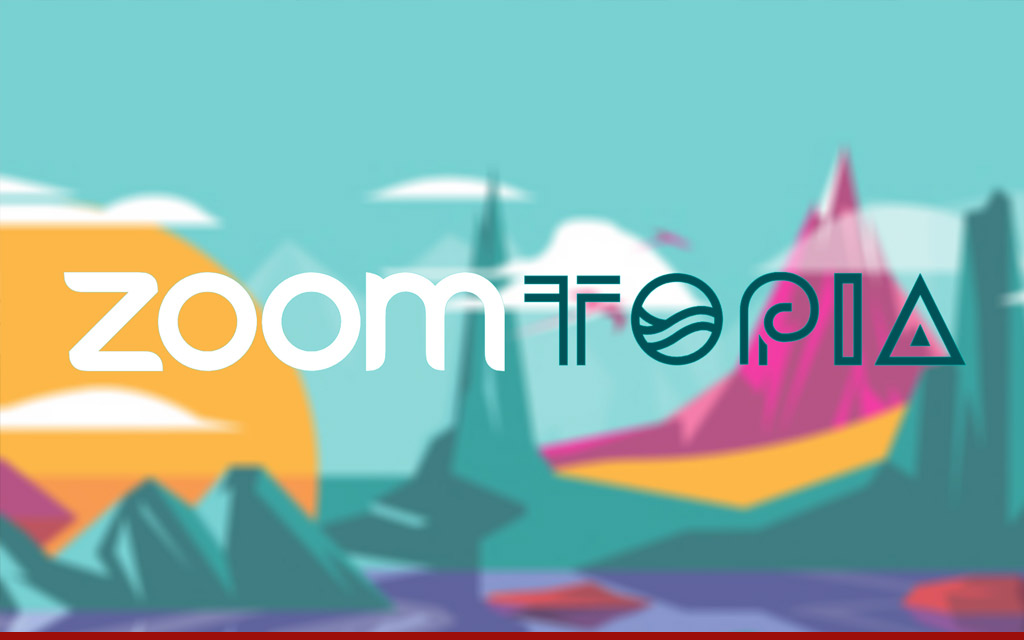Everyone is peddling happiness these days, and for myriad reasons. The first time I ran into the notion of happiness in the workplace was in 2010 when Jenn Lim became the chief happiness evangelist at Zappos. (She now runs a consultancy called DH, named for “delivering happiness.”) Humbug, I remembered thinking. Does a company really need a department of happiness?
It took me a decade to become a believer. Last week I attended Zoomtopia, Zoom’s annual customer event. “Delivering happiness” was the mantra. (And yeah, the company’s executives and employees must be feeling happy, since Zoom’s stock has risen almost 700% in the past year, outperforming every other tech major company.) The happiness Zoom delivers transcends how we might feel about shoes, promising to enhance human intimacy and interaction. Unlike its gargantuan competitors, Microsoft Teams, WebEx, Google Meet, and others, Zoom was born laser-focused on video conferencing. Now it’s turning that platform into a full-fledged video-based ecosystem.
Zoomtopia drew 50,000 virtual attendees. It featured a celebrity lineup including Arianna Huffington (with a mindfulness Zoom app), chef Marcus Samuelson, Mark Cuban, Ava Duvernay, and a special appearance from Alicia Keys. All of them extolled the company’s video platform. The set was evocative of the Beatles’ Sgt. Pepper’s album. And attendees were guided through a mystery tour of what the video-based ecosystem may start to look like.
Here’s a recap and why it’s important.
Zoom at Scale
In his opening welcome, CEO Eric Yuan enthused that Zoom now extends to the farthest reaches of the globe. The platform boasts 300 million daily participant meetings and is averaging 3 trillion meeting minutes a year at present. With scale now firmly under its belt, Zoom aims to move from being just a video conference solution to become a digital ecosystem.
Why it Matters: The company reached critical mass as a video conferencing platform and can now expand its reach to become a platform like Google or Facebook, but built on video.
A Marketplace for Videos
OnZoom is the company’s video-based “marketplace for immersive experiences”–a platform that allows anyone to create, host, and monetize events. Think fitness classes, makeup lessons, home repair, cooking, concerts, comedy improv, music and dance — all taught on Zoom’s meeting platform. Fundraising features are also a part of the platform. A user will be able to host and schedule a single event or a series for up to 1,000 attendees (depending on the license they pay for). They’ll be able to list their event on a Zoom directory, share and promote it via social media from within Zoom, and reach new audiences well beyond their own location. And because the instructors can reach larger audiences, classes will likely be super affordable. Plus, Zoom will handle the payments (and is even picking up processing fees while OnZoom is in beta).
What it Means: This is a big step toward Zoom delivering an end-to end system. A user can create, advertise and monetize their event on the platform. Equally as important is that Zoom eliminated two pesky pain points: payment and discoverability. Paypal partners with Zoom for handling the payments and Pledging will assist with fundraising events. Ben Hindman, CEO of Splash, a virtual events platform, told me that this is an event creator’s dream (see Hindman’s Zoomtopia recap and reaction video here). “We want to put butts in seats,” he said. “That takes event discovery.” With its 300 million daily users (almost as many people as live in the U.S.) Zoom can help gig workers, fundraisers and many others discover audiences.
Zapps
Before the Zootopia launch, Zoom let third party apps integrate with the Zoom platform by using the Zoom APIs. Now it has flipped the table with the launch of Zapps. They are native applications from third parties that integrate with Zoom, in much the same way Google lets a user add extensions to Chrome. Zapps eliminates the need for users to switch between multiple applications on their devices, allowing them to streamline things like granting permissions, giving documents accessibility, and collaborating on screen. Many of the first Zapp partners are collaboration and work productivity apps like Dropbox, Slido, Atlassian, Slack, Asana, Smartsheet, and Salesforce. Cousera has also created a Zapp for educational course delivery. At the launch event, Zoom announced the next wave of Zapps, including telehealth ones from healthcare-data giant Epic and Alameda Health System.
What it Means: Before, third-party apps had to integrate with Zoom. Now they’ll be able to build special Zapps right on the platform. When they do, a user won’t need to leave their Zoom call to access the functionality of these apps.
Webinars Get Personal
The Zoom webinar tool was upgraded to include breakout rooms, a welcome addition to the one-to-many zoom webinars we’ve all gotten used to (including here at Techonomy). Zoom added new audience reactions like “faster or slower” to signal speakers about their pacing, animated reactions much like the ones Facebook Live uses, and bubble ups, allowing the most popular comments to surface. Personal avatars can grab seats at the table, classroom or auditorium so that the virtual room is filled with real-looking characters, as below.

What it Means: In a word, intimacy. Zoom will begin to move away from the Hollywood Squares world of its birth to new and different formats that mimic a wide variety of real-world interactions.
——
Below the fold there were other important Zoom announcements: end-to-end encryption, a boatload of specialized Zoom hardware, and more.
Can they keep it simple?
There’s lots to celebrate in the Zoomtopia announcements for many users of the platform. But the biggest risk Zoom faces is that this overload of happiness will lead to a more complicated system. Can it retain the magic of setting up a single-click video call in an increasingly-growing universe of video goodies? CEO Yuan has long stated that a great product results from great experience, great customer support and easy to navigate processes. It may be something he needs to keep reminding himself.
READ MORE: https://techonomy.com/2020/10/will-zoom-new-happy-place-everything/




